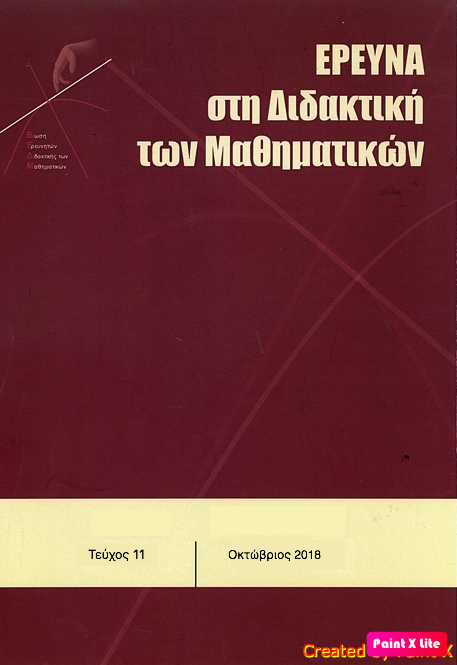Η ΕΠΙΔΡΑΣΗ ΠΑΡΕΜΒΑΤΙΚΟΥ ΠΡΟΓΡΑΜΜΑΤΟΣ ΒΕΛΤΙΩΣΗΣ ΤΗΣ ΙΚΑΝΟΤΗΤΑΣ ΝΟΗΤΙΚΗΣ ΠΕΡΙΣΤΡΟΦΗΣ ΣΤΗΝ ΕΠΙΔΟΣΗ ΣΕ ΕΡΓΑ ΣΤΕΡΕΟΜΕΤΡΙΑΣ
Resumen
Η παρούσα έρευνα διερευνά την επίδραση παρεμβατικού προγράμματος διδασκαλίας που είχε ως στόχο την ανάπτυξη της ικανότητας νοητικής περιστροφής, καθώς και την επίδραση του φύλου και της εξάρτησης από το πεδίο στην επίδοση μαθητών Γ΄ Γυμνασίου σε έργα στερεομετρίας τα οποία απαιτούσαν περιστροφή. Επίσης, διερευνήθηκε η επίδραση του φύλου και της εξάρτησης από το πεδίο. Τα αποτελέσματα έδειξαν στατιστικά σημαντική αύξηση της επίδοσης των μαθητών που δέχθηκαν τη διδακτική παρέμβαση, ενώ δεν εντοπίστηκαν έμφυλες διαφορές πριν και μετά την παρέμβαση. Τόσο η ικανότητα νοητικής περιστροφής όσο και η εξάρτηση/ανεξαρτησία από το πεδίο φάνηκε να είναι παράγοντες πρόβλεψης της επίδοσης στη στερεομετρία. Η ικανότητα νοητικής περιστροφής συνδέεται με την επίδοση των μαθητών στη στερεομετρία και αποτελεί μία σημαντική γνωστική λειτουργία που επηρεάζει την επίδοση στις θετικές επιστήμες γενικά. Ως εκ τούτου συζητούνται εκπαιδευτικές προεκτάσεις των αποτελεσμάτων της έρευνας.
Article Details
- Cómo citar
-
Ευσταθίου (Marinos Efstathiou) Μ., & Παναούρα (Rita Panaoura) Ρ. (2018). Η ΕΠΙΔΡΑΣΗ ΠΑΡΕΜΒΑΤΙΚΟΥ ΠΡΟΓΡΑΜΜΑΤΟΣ ΒΕΛΤΙΩΣΗΣ ΤΗΣ ΙΚΑΝΟΤΗΤΑΣ ΝΟΗΤΙΚΗΣ ΠΕΡΙΣΤΡΟΦΗΣ ΣΤΗΝ ΕΠΙΔΟΣΗ ΣΕ ΕΡΓΑ ΣΤΕΡΕΟΜΕΤΡΙΑΣ. Έρευνα στη Διδακτική των Μαθηματικών, (11), 53–70. https://doi.org/10.12681/enedim.18939
- Sección
- Άρθρα

Esta obra está bajo una licencia internacional Creative Commons Atribución 4.0.
Οι συγγραφείς των άρθρων που δημοσιεύονται στο περιοδικό διατηρούν τα δικαιώματα πνευματικής ιδιοκτησίας επί των άρθρων τους, δίνοντας στο περιοδικό το δικαίωμα της πρώτης δημοσίευσης. Άρθρα που δημοσιεύονται στο περιοδικό διατίθενται με άδεια Creative Commons BY και σύμφωνα με την άδεια μπορούν να χρησιμοποιούνται ελεύθερα, με αναφορά στο/στη συγγραφέα και στην πρώτη δημοσίευση.


